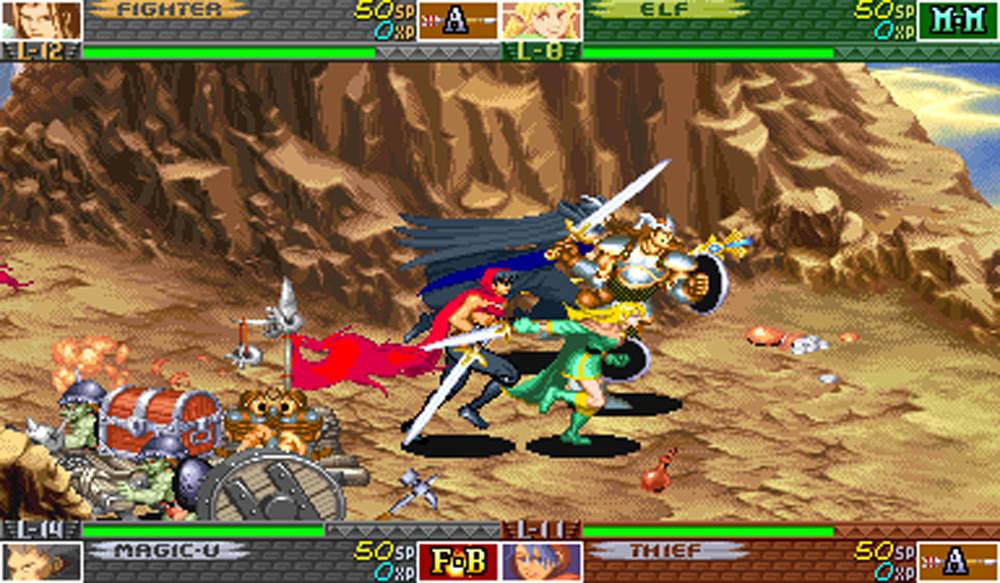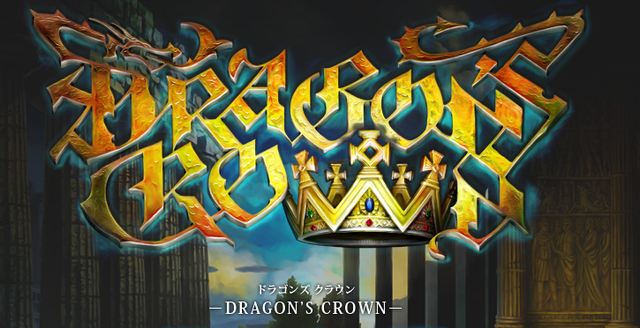Dragon’s Crown – I don’t hate Dragon’s Crown, but I certainly don’t love the actual game underneath its majestic visuals. I defended its aesthetic choices in regard to the female form, and done so twice, but that does not mean that I retain a vested interest in the actual game.
Over time, I developed a love/hate relationship with VanillaWare. Let’s face it: the early 2000s felt like the death of two dimensional gaming artistry as most developers and publishers fled for greener pastures. The wafting smell of the three dimensional world, however blocky, seemed too good to be true: faster, easier, and cheaper to produce, why bother with pixel or handrawn art when a few computer science majors could whip up the real thing? Over time, video games finally transitioned back to high quality 2D art (as a niche, but a wonderful blossoming niche all the same), and VanillaWare remains partly to thank for 2D’s continuance. Their games, from Princess Crown (Japan-only) to Dragon’s Crown, brim with vivacity and life, and the animation continues to astound in the vein of an animated film.
And yet, I find that all these aesthetic and aural pleasures (Hitoshi Sakimoto’s soundtracks attached to these projects certainly doesn’t hurt) don’t necessarily make for a great game experience. The old adage “gameplay first, graphics second” also apply in the case of VanillaWare’s artistry as well, much as I hate to admit it.
VanillaWare doesn’t let their art breath because of their insistence on placing their fans in strange action-RPG hybrids. Instead of letting us bask in the glory of their work, we must wrangle with statistics in addition to our action-oriented mechanics. Hitting that balance isn’t an easy task by any means. The player must feel as if their skill in controlling their character actually matters, while also making gear/loot/levels an actual necessity. No game yet, at least without a level cap of some kind, has yet to impress me on that front. To quote myself regarding VanillaWare’s first big North American release:
Odin Sphere attempts to make an action game with RPG elements. Still, you cannot win on pure skill alone. The delay between your attacks, coupled with the inability to dodge or avoid attacks through some invincible maneuver, in addition to enemies not being stunned when you attack them means your pure reflex-oriented skills don’t work. Rather, VanillaWare wants to force an impression on the player: use items, use all these RPG-like tools at your disposal to win. You will take hits, so throw some plants out there and grow some health. Buy some more inventory space so you have reserve rations; also, use said bag space for extremely powerful magic spells.
Unfortunately, Odin Sphere made no sense to most players, including myself. Expectations count for a lot in video games, and the aesthetic style certainly looked like a throwback to side-scrollers like Final Fight. Who expected such an odd hybrid? VanillaWare later made Muramasa: The Demon Blade, which cleaved the game in half to support both action and RPG-focused players, but it comes at the expense of making the game’s Metroidvania styling interesting.
Unfortunately, I find that just as true as ever for Dragon’s Crown. Why am I playing Diablo in a sidescrolling arcade-style action game? Why do I need to hold down the attack button in order to run? Why are items attached to the D-Pad or analog sticks? Why do I need to use a mouse cursor to loot chests or direct computer controlled players elsewhere? Why does the game not provide me with clear visual or audio cues for when an evade is invincible or not? Item appraisals, ugh! Why not tell me I can equip the item before I waste the copious quantity of gold to identify it that I will regain in spades next time? There’s no good decision-making here, just grind.
Clearly, Dragon’s Crown wants you to use their inventory system, that’s why. Unlike George Kamitani’s contributions to the two Dungeons & Dragons arcade classics from Capcom (Tower of Doom is good, but Shadows over Mystara takes the cake), the shoehorned RPG mechanics fit in service of the modern home market rather than the fast-paced world of the coin-op arcade. Instead of beating up monsters, I’m looking through menus, reading quest information, learning about the world through narration, and generally looking at lots of menus. When you’re actually playing, Dragon’s Crown still requires more menus and scrolling through them, or dialogue, or whatnot.

Perhaps the hour or so that I spent so far would tell me otherwise, but I am finding myself with the same lingering feelings regarding VanillaWare’s previous work: all this talent could create something so much better, if only they could just abandon this constant fixation with statistics jammed into their action game! If you can’t provide me with a competent venture that doesn’t wobble towards one side of the fence or the other, at least let me turn off the RPG so I can enjoy the challenge of the sidescrolling action.
Muramasa became much more entertaining when you turned on the higher difficulty level, since the items actually felt required as a scarce resource for rectifying mistakes rather than cheap hits. Dragon’s Crown doesn’t offer us such adventures due to the focus on multiplayer. Like any game, I’m sure playing with friends ups the ante on your enjoyment factor, but it certainly doesn’t make for a focused experience.
Of course, I will finish it to see if my initial expectations and impressions prove suspect, but VanillaWare fails to earn any credibility with me when they continue to make these same strange missteps. Maybe their game simply aren’t for me. That doesn’t mean I won’t continue to buy them at full price, just because I love the company and what it represents. I just truly desire for them to make the great game, for all of their material brims with great ideas and potential. However, great ideas alone do not make for a great game.

